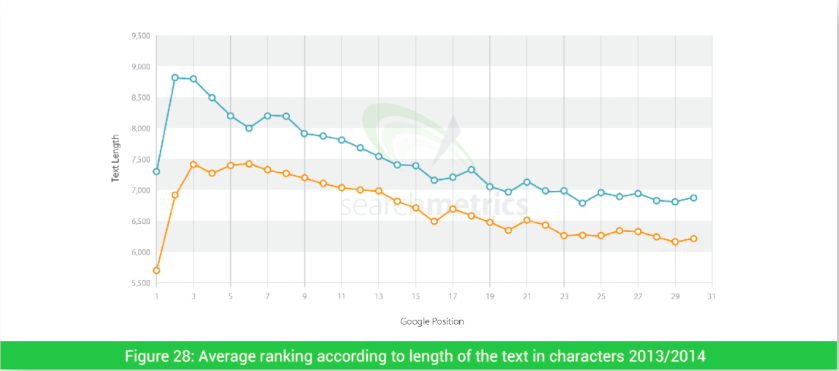Far too often when I’m perusing websites centered on lead generation – from B2B software to digital consulting – I come across the same wasted opportunity: Countless sites publish white papers or some other high-value, high-resource assets and leave them “ungated” – available in their entirety to any visitor who stumbles across the site.
Gating your richest content is one of the simplest ways to turn web visitors into leads.
If you’re not familiar with this marketing strategy and why it’s so important, here’s a basic breakdown: Gated content, fundamentally, is a content asset that’s only accessible through a call to action such as a form fill or subscription. Its main purpose is to act as a means for gathering key information from your website visitors in order to convert them into prospective leads.
When high-value web content is not gated, businesses lose leads and miss opportunities to convert readers on an asset that took several weeks to conceptualize, research, write, edit and design. Put simply: A lot of time and money went into the white paper’s production, and gating it with a form fill provides a bigger ROI.
To gate or not to gate?
Gated content is most often longer form and branded to provide a higher value. If visitors are expected to share personal information in exchange for this piece of content, it must be clear that it is a worthy, valuable piece of information. I recommend giving a “teaser” of the content behind the gate so users know it’s worth it. Some examples of content that should be gated:
- White papers
- eBooks
- Webinars
Some other content that you could gate, depending on how many “take-homes” the user will receive, include:
- Infographics
- Worksheets
- Ready-to-print checklists
It’s important for any industry; there is no site too big or too small to utilize gated content! There’s a misconception among smaller brands that their websites aren’t big enough to utilize gated content, but it’s important for any industry. Moreover, it is essential that assets that are gated are clearly marked with a dynamic call to action or a clean and simple form fill to collect the data.
Here’s one good case for gating your assets: B2B tech company breaks lead gen record with gated graphics.
Gated content can help SEO
Perhaps you’re thinking you’ll lose search traffic to pages because the rich informations isn’t available on the page. You’re not entirely wrong… this is another good reason to offer a “teaser” on the download page. Search crawlers (like users) will assess the gated asset based on the value the download page offers in its own right.
Still, there’s an SEO case for longform content: In the wake of multiple 2014 Google Algorithm updates, quality has eclipsed quantity when it comes to content. Last year, Searchmetrics noted that longer content generally outranks shorter pieces in SERPs. Specifically, its 2014 Ranking report identified a positive correlation between content with more characters and higher search rankings. The No. 1 ranking averaged around 7,000 characters. More, In the aftermath of Google’s latest Panda update, a separate study indicated sites publishing in-depth content and downloadable resources were benefiting from the algorithm refresh, while sites producing thin or repetitive content lost search visibility and ranking positions.

Premium content attracts quality visitors
Quality content attracts quality visitors who are more likely to embark on a journey through your brand’s sales funnel. Broadly, gated content connotes quality, and quality content provides the value add that is crucial in enticing potential leads to share their contact information with you.
Engaging resources position your brand above the rest in your industry, and they build trust with your audience when they’re overflowing with valuable information. Trust and thought leadership are key factors in generating conversions with blog content. Like any transaction, online or offline, a prospective customer must first believe that you are knowledgeable about what you sell, trust that you are going to provide a quality product or service and believe that you’ll be a valuable partner before proceeding with a purchase.
Find the right way to gate content for your business
Before you create content to put behind a download wall with the anticipation of generating leads, you need to analyze your target audience and the monthly volume of traffic to your website. This will help you gauge whether to gate your content and determine the best type of information you to offer to readers.
I recommend that you ask yourself two questions to decide on the best strategy for your website:
1. Are you sharing valuable information that can help your audience run their businesses better or make their jobs easier?
If you answered yes, it should be gated. You spent time and money creating this in-demand content, and you do not want to be simply giving it away.
2. Are you creating content to stir up interest and educate your readers on who you are and what you have to offer?
![]() If you answered yes, your content should NOT be gated. Promotional or salesy content, advertising and information about your products and services information should be non-gated so it’s readily available to your audience
If you answered yes, your content should NOT be gated. Promotional or salesy content, advertising and information about your products and services information should be non-gated so it’s readily available to your audience
Standard content won’t stand out anymore
Let’s face it – everyone is creating content these days. Publishing content alone won’t give you the same kinds of SEO and conversion results as it did five – or even two – years ago. The market has matured, and your strategy has to keep up if you want your brand to stand out online. These days, leaders produce diverse content that serves distinct purposes throughout the customer journey.
Use non-gated content to pique interest and engage a visitor who’s higher in your sales funnel. If you want to build visitors’ understanding of what you do and why they should choose you over a competitor, give it to them through in-depth, high-quality assets that convey insights exclusive to your brand or business model. Just be sure to gate those pieces of content that seal the deal and prove your value, or you’ll lose leads and miss opportunities to convert readers.




